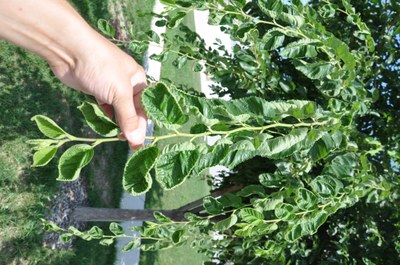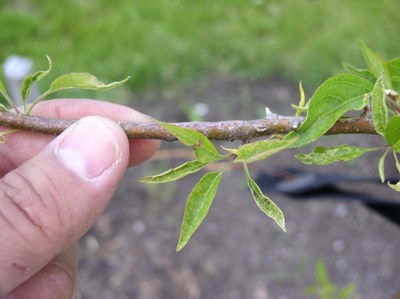Herbicide Damage
Authors: Aaron Bergdahl and Joseph Zeleznik
Symptoms
• Abnormal growth, necrosis, blistering and discoloration occurs in plant tissues.


Management and other important facts
• Always read and follow the product label when applying herbicides.
• Avoid applying herbicides during windy conditions to prevent herbicide drift.
• Avoid applying broadleaf herbicides on warm days.
• The use of farm-grade chemicals for broadleaf weed control on lawns has killed even mature trees.
